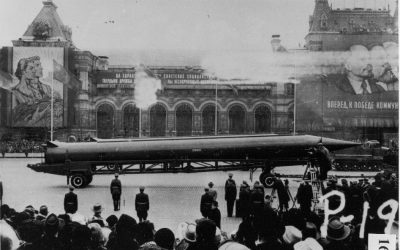In the records of Cold War history, few episodes are as gripping or as fraught with the spectre of global annihilation as the Cuban Missile Crisis of October 1962. Over thirteen tense days, the world teetered on the brink of nuclear war as the United States and the Soviet Union faced off over the installation of Soviet nuclear missiles in Cuba. This confrontation remains a defining moment of the 20th century, illustrating the razor’s edge upon which international peace sometimes balances.
Background
The roots of the Cuban Missile Crisis stretch back to the aftermath of World War II when the United States and the Soviet Union emerged as superpowers in a new global order defined by their ideological rivalry.
This period, known as the Cold War, was marked by proxy wars, espionage, and the ever-present threat of nuclear escalation.
Cuba entered this volatile scene in 1959 when Fidel Castro led a revolution that ousted a US-backed dictator and eventually aligned the island nation with the Soviet Union. By 1962, the geopolitical chessboard saw the U.S. attempting to contain the spread of communism while the Soviet Union sought to support revolutionary movements and extend its influence, leading to a dangerous standoff just 90 miles off the coast of Florida.
Timeline of events
Discovery of the Missiles
The crisis began in earnest on 16 October 1962, when President John F. Kennedy was informed that U.S. reconnaissance planes had captured photographic evidence of Soviet missile bases under construction in Cuba. These missiles had the capability to strike much of the Eastern United States, including Washington, D.C., with nuclear weapons, drastically altering the strategic balance of power.
The Thirteen Days
The following days saw a complex web of negotiations, military manoeuvres, and backchannel communications. Kennedy convened a group of advisors, known as the Executive Committee of the National Security Council (ExComm), to deliberate on the U.S. response. The options ranged from a full-scale invasion of Cuba to diplomatic overtures to the Soviet Union.
One of the most critical moments came on 22 October, when Kennedy addressed the nation, revealing the existence of the missiles to the American public and announcing a naval blockade of Cuba, termed a “quarantine”, to avoid legal implications of war. The world watched as Soviet ships, possibly carrying more military supplies to Cuba, approached the blockade line.
The crisis peaked on 27 October, a day filled with perilous incidents, including the downing of a U-2 spy plane over Cuba and the initiation of unauthorised U-2 flights over the Soviet Union, which could have been mistaken for a nuclear first strike. However, behind the scenes, frantic diplomatic efforts were underway. An agreement was reached wherein the Soviet Union would dismantle its missiles in Cuba in exchange for a public U.S. declaration not to invade Cuba and a secret promise to remove US Jupiter missiles from Turkey.
Geopolitical implications
The Cuban Missile Crisis had immediate and long-lasting effects on international relations. In the immediate aftermath, it led to a thaw in US-Soviet relations, exemplified by establishing the Moscow-Washington hotline to prevent future crises and the signing of the Partial Nuclear Test Ban Treaty in 1963.
Long-term, it brought the world to the stark realisation of the nuclear threat, fostering a more cautious approach to Cold War confrontations and laying the groundwork for subsequent arms control agreements.
The Cuban Missile Crisis stands as a testament to the dangers of nuclear brinkmanship and the value of diplomatic engagement. It vividly illustrates how close the world came to nuclear war and how leadership, diplomacy, and sometimes sheer luck can avert catastrophe. The lessons of October 1962 continue to resonate, reminding us of the need for vigilance, communication, and a commitment to peace in an uncertain world.





